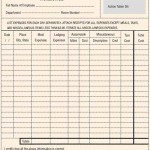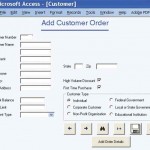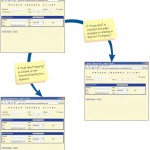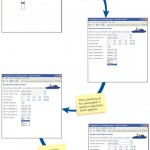Users deserve quality output. The quality of system input determines the quality of system output. It is vital that input forms, displays, and interactive Web documents be designed with this critical relationship in mind. Well-designed input forms, … [Read more...] about Designing Effective Input
Designing Effective Input
Good Form Design
The systems analyst should be capable of designing a complete and useful form. Unnecessary forms that waste an organization’s resources should be eliminated.Forms are important instruments for steering the course of work. They are preprinted … [Read more...] about Good Form Design
Good Display and Web Forms Design
Much of what we have already said about good form design is transferable to display design and the design of Web sites and Web pages. Once again, the user must remain foremost in the analyst’s thoughts during the design of displays.There are … [Read more...] about Good Display and Web Forms Design
Graphical User Interface (GUI) Design
A graphical user interface (GUI, pronounced as "gooey" or "gee-you-eye")) is the way that users interface with the Windows and Macintosh operating systems. This is also referred to as a point-and-click interface. Users can use a mouse to click on an … [Read more...] about Graphical User Interface (GUI) Design
Form Controls and Values
Each of the controls included in a GUI interface must have some way of storing the data associated with the control. On a Web page this is done using a name and a value pair that are transmitted to the server or in an email sent along with the form, … [Read more...] about Form Controls and Values
Dynamic and Three Dimensional Web Pages
Dynamic Web Pages Dynamic Web pages change themselves as the result of user action. They often use JavaScript to modify some part of the Web page or a style. Changing an image when the mouse moves over it or rotating random images at a given time … [Read more...] about Dynamic and Three Dimensional Web Pages
Ajax (Asynchronous JavaScript and XML)
Ajax is a technique that works in more recent Web browsers. It involves the use of JavaScript and extensible markup language (XML). Traditionally, each time a Web page needed data from a different database table, a request was sent to the server and … [Read more...] about Ajax (Asynchronous JavaScript and XML)
Intranet and Internet Page Design
In the previous chapter "Designing Effective Output", the rudiments of designing Web sites were discussed. There are more hints about designing a good Internet or intranet fill-in form that should be noted now that you have learned some of the … [Read more...] about Intranet and Internet Page Design





